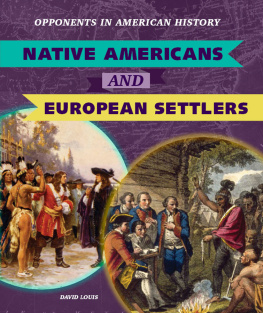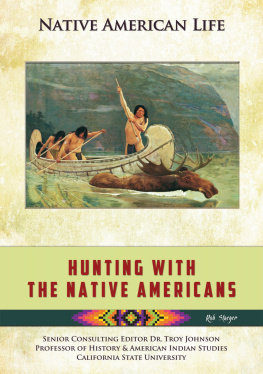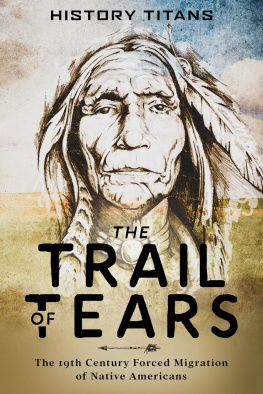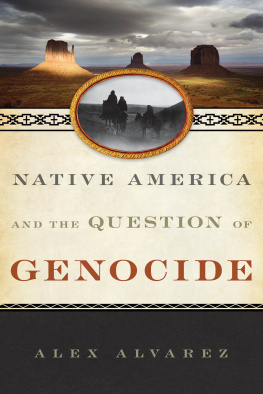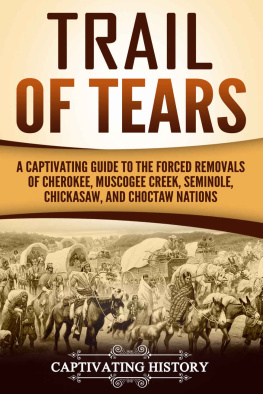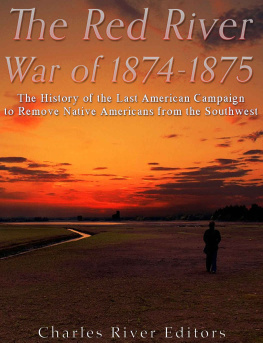Contents
Published in 2020 by The Rosen Publishing Group, Inc. 29 East 21st Street, New York, NY 10010
Copyright 2020 by The Rosen Publishing Group, Inc.
All rights reserved. No part of this book may be reproduced in any form without permission in writing from the publisher, except by a reviewer.
First Edition
Editor: Jane Katirgis
Book Design: Tanya Dellaccio
Photo Credits: Cover (left) Universal History Archive/Universal Images Group/Getty Images; cover (right), p. 5 MPI/Archive Photos/Getty Images; p. 7 (bottom) Fototeca Storica Nazionale/Hulton Archive/Getty Images; p. 9 PHAS/Universal Images Group/Getty Images; p. 11 Science & Society Picture Library/SSPL/ Getty Images; p. 13 Print Collector/Hulton Archive/Getty Images; pp. 15 (top), 21 Kean Collection/Hulton Fine Art Collection/Getty Images; p. 15 (bottom) https://upload.wikimedia.org/wikipedia/commons/a/a6/Roanoke_map_1584.JPG; p. 17 https://upload.wikimedia.org/wikipedia/commons/6/6e/The_First_Thanksgiving_cph.3g04961.jpg; p. 19 (top) https://upload.wikimedia.org/wikipedia/commons/a/a2/JohnWinthropColorPortrait.jpg; p. 19 (bottom) Bettmann/Getty Images; p. 23 Historical Picture Archive/Corbis Historical/Getty Images; p. 25 (top) https://upload.wikimedia.org/wikipedia/commons/0/02/Vue_de_la_descente_a_Terre_Neuve_par_le_chevalier_de_Ternay_en_1762.jpg; p. 25 (bottom) https://upload.wikimedia.org/wikipedia/commons/c/c7/Washington_1772.jpg; p. 27 Stock Montage/Archive Photos/Getty Images; p. 28 https://upload.wikimedia.org/wikipedia/commons/d/d4/Trail_of_tears_map_NPS.jpg; p. 29 https://upload.wikimedia.org/wikipedia/commons/a/a4/Edgar_Samuel_Paxson_-_Custer%27s_Last_Stand.jpg; p. 30 Gabriel Olsen/Getty Images Entertainment/Getty Images.
Cataloging-in-Publication Data
Names: Hofer, Charles.
Title: Native Americans and European settlers / Charles Hofer.
Description: New York : PowerKids Press, 2019. | Series: Opponents in American history | Includes glossary and index.
Identifiers: ISBN 9781538345429 (pbk.) | ISBN 9781538343685 (library bound) | ISBN 9781538345436 (6 pack)
Subjects: LCSH: Indians of North America--First contact with Europeans--Juvenile literature. | Indians of North America--Colonization--Juvenile literature. | Indians of North America--History--Juvenile literature. | America--Discovery and exploration--European--Juvenile literature.
Classification: LCC E98.F39 L685 2019 | DDC 970.01--dc23
Manufactured in the United States of America
CPSIA Compliance Information: Batch #CSPK19. For Further Information contact Rosen Publishing, New York, New York at 1-800-237-9932
A TROUBLED HISTORY
The history between Native Americans and European settlers has its fair share of treaties made and promises broken. Its a history of bloody conflicts, deadly disease, and destructive war. Some newcomers came to North America seeking religious freedom. Others came seeking fortune such as land and gold. The native peoples of the Americas were often caught in the middle, their own lands turned into battlegrounds by rival European empires.
As the newcomers spread across the continents, many natives were forced from their ancestral lands. Throughout the changes, Native Americans tried to hold on to their homes, culture, and way of life. Its a struggle that has lasted centuries. Even today, more than 500 years after Europeans first arrived, tensions between descendants of the two groups remain.
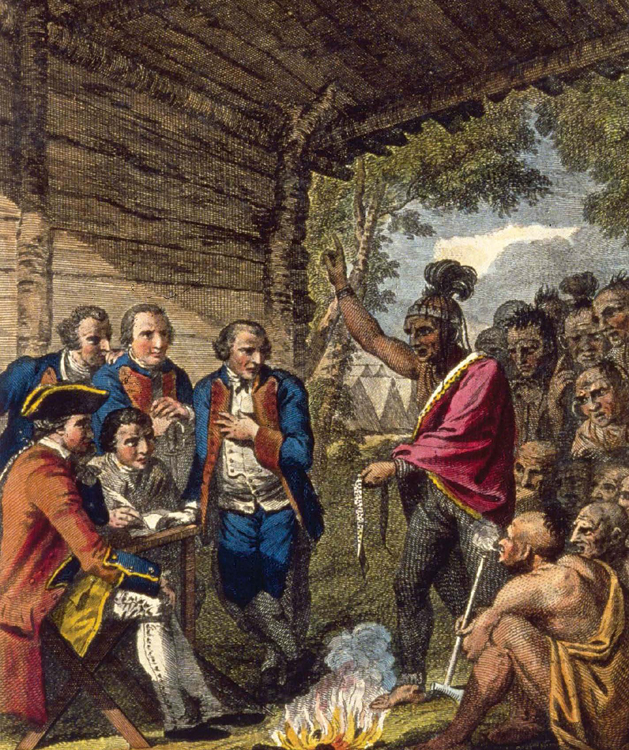
RELATIONS BETWEEN NATIVE AMERICANS AND EUROPEAN SETTLERS WERE SOMETIMES PEACEFUL . AT OTHER TIMES, THE RELATIONS WERE MARKED BY VIOLENCE AND CONFLICT .
EARLY CONTACT
In 1492, European explorer Christopher Columbus landed on an island he called Hispaniola (today known as Haiti). He described the new lands as rich and fertile for planting... and for building towns and villages. To the Europeans, the lands that Columbus discovered became known as the New World. They included North and South America. But the New World was hardly new. People had been living in these lands for thousands of years before Columbus arrived.
The stage was set for clashes between natives and newcomers. On one side, the European settlers came to the New World determined to expand their empires, gain new lands, and find wealth. On the other side, the Native Americans meant to keep their lands and homes.
NUMBERS OF NATIVES
Scholars still disagree on the actual number of people living in North America at the time Columbus landed in the Caribbean. Some put the estimate around 1 million natives, while others suggest about 12 million. Regardless, North America was home to dozens of native groups from coast to coast, each group with its own culture, religion, and politics.
HEAD TO HEAD
Today, historians often use the term pre-Columbian to describe the period of time prior to Columbuss arrival in the New World in 1492.
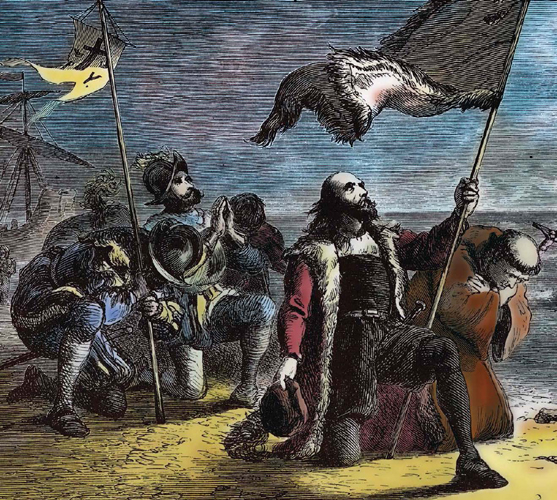
WORLDS COLLIDED WHEN COLUMBUS FIRST ARRIVED IN THE NEW WORLD IN 1492 . AT THE TIME, THE AMERICAS WERE HOME TO A RICH VARIETY OF MANY DIFFERENT NATIVE AMERICAN CULTURES THAT FLOURISHED FOR HUNDREDS OF YEARS BEFORE EUROPEANS ARRIVED .
MORE EUROPEANS ARRIVE
Many other Europeans landed in the New World during the late 1400s and the 1500s. This Age of Exploration was an era during which many European explorers traveled to far-off places around the globe. In the New World, John Cabot claimed some of the land that would become Canada for England. Juan Ponce de Len of Spain explored the West Indies and what would become Florida. The Dutch, Swedish, and French also landed in North America and established settlements.
Relations between the newcomers and the natives were peaceful at first. But as more settlers arrived, they sought lands and riches for themselves and their countries back in Europe. Many of the Europeans also wanted to convert the natives to Christianity and described them as heathens or beasts in human shape.
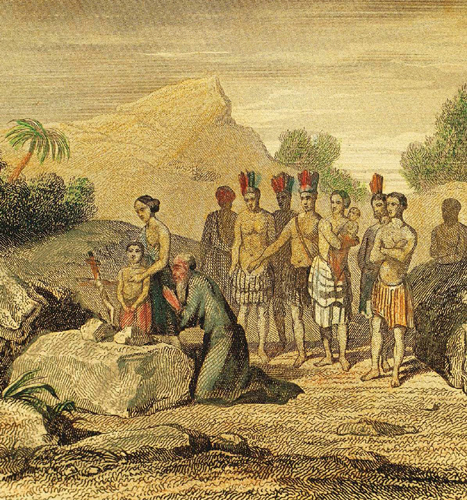
THE AGE OF EXPLORATION WOULD BRING PEOPLE FROM A NUMBER OF EUROPEAN EMPIRES TO THE NEW WORLD . THE INVADERS WANTED LAND, BUT MANY ALSO WANTED TO IMPOSE CHRISTIANITY ON THE NATIVES .
IN THE NAME OF GOD
During the Age of Exploration and the years that followed, many European nations wanted to spread Christianity around the world. Sometimes, settlers tried to convert their native neighbors through peaceful means. Many times, however, they used force. Some Europeans used religion as an excuse to take land away from natives. Many European settlers believed Christianity was superior to any Native American religion. Many of these settlers came to the New World to find religious freedom they didnt have in Europe.
RISING TENSIONS
Rising tensions between Native Americans and European settlers began not long after first contact. When Columbus returned to the New World in 1493, he found the settlement hed left behind destroyed and the men whod stayed there dead. Columbus and his army of 1,200 men turned on the native Taino people. They killed many people and captured hundreds of Taino men and women and enslaved them to work in mines and plantations on Hispaniola.

